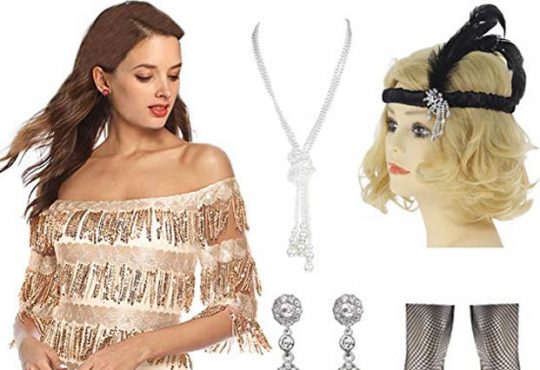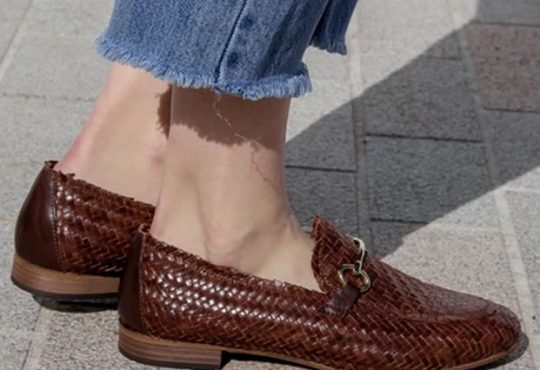In the dynamic world of fashion, sports shoes have transcended their original purpose, evolving from basic functional footwear into cultural icons. Once purely utilitarian, designed to support athletes in performance, fashionable sports shoes are now at the intersection of comfort, style, and high performance, appealing not only to athletes but also to trend-conscious consumers. With major brands continually pushing boundaries in design, technology, and branding, fashionable sports shoes have redefined casual wear and become symbols of status and self-expression.
This article dives deep into the evolution, cultural significance, and future trends of fashionable sports shoes, exploring their role in both the fashion industry and in everyday life.
A Brief History of Sports Shoes
To understand the current fascination with fashionable sports shoes, it’s essential to look back at their origins. Sports shoes, initially developed for specific athletic purposes, were first created in the late 19th century. Early versions were far from what we see today. Basic canvas shoes with rubber soles, known as plimsolls, marked the beginning of sports footwear. It wasn’t until the early 20th century, when brands like Converse (1908) and Keds (1916) emerged, that the sports shoe became popularized, both in athletics and casual settings.
By the 1920s, Adi Dassler founded Adidas in Germany, focusing on creating shoes that catered to athletes’ performance needs. These shoes were lightweight, supportive, and designed with functionality in mind. Over the next several decades, major brands like Adidas, Puma, and later Nike and Reebok, began investing heavily in research and development to improve their shoes’ performance.
The functional aspect of sports shoes was paramount up until the 1970s when these shoes started gaining attention beyond sports. As the line between athletics and lifestyle blurred, people began wearing their fashionable sports shoes not just for performance but as part of their everyday attire. This period marked the start of a cultural shift in how sports shoes were perceived, which brings us to their current status.
The Fusion of Fashion and Function
Today, fashionable sports shoes serve a dual purpose: they are both functional and aesthetically pleasing. Athletes and casual wearers alike now seek shoes that not only perform well but also align with the latest fashion trends. Designers have picked up on this demand, and companies now frequently collaborate with fashion houses, designers, and celebrities to create exclusive, limited-edition collections that blur the lines between sport and street style.
A key factor that has contributed to the rise of fashionable sports shoes is the growing global focus on health and fitness. As more people adopt active lifestyles, they want their clothing and footwear to reflect their commitment to fitness, but without sacrificing style. Sports shoes that offer comfort, functionality, and a sleek design have become the go-to choice for people on the move.
Additionally, the rise of streetwear in the 1990s and 2000s brought fashionable sports shoes to the forefront of fashion culture. Sneakers, which were once relegated to gym use, became central to the streetwear look—a fashion subculture that combined sports apparel with everyday wear. Today, streetwear’s influence on mainstream fashion is undeniable, with sneakers remaining a staple.
Brand Influence and Marketing Power
One of the defining aspects of fashionable sports shoes is the role of brands and their marketing strategies. Companies like Nike, Adidas, Puma, and New Balance have become household names, not just for their innovations in performance footwear, but for their ability to shape cultural trends.
Nike, for instance, revolutionized sports shoes with its introduction of Air technology in the late 1970s, followed by the release of the Air Max line. Not only were these shoes groundbreaking in terms of performance, but they also became highly coveted fashion items due to their bold design. The Air Max 1, with its visible air unit and innovative silhouette, became a symbol of the sneakerhead culture, where enthusiasts collected and traded limited-edition shoes.
Another example is Adidas’ collaboration with rapper Kanye West to create the Yeezy brand. Yeezy shoes have consistently sold out in minutes, illustrating how fashionable sports shoes have entered the realm of luxury fashion. The Yeezy line, which blends futuristic design with athletic performance, appeals to both athletes and fashionistas alike.
This strategic use of celebrity endorsements has allowed brands to tap into a broader, more fashion-conscious audience. Collaborations with famous personalities help brands reach consumers who may not be athletes but are drawn to the shoes because of their status as a fashion item.
The Impact of Sneaker Culture
One of the most influential movements behind the rise of fashionable sports shoes is sneaker culture. What began as a niche community of enthusiasts has grown into a global phenomenon, with millions of people collecting and wearing limited-edition sneakers. Sneaker culture is driven by exclusivity, rarity, and the desire to own pieces that reflect personal identity and taste.
Sneakerheads, as they are called, seek out shoes that are not just comfortable or performance-oriented but that also carry cultural significance. Some shoes are linked to specific athletes, events, or moments in pop culture, making them valuable not just for their design but also for their history. For instance, the Nike Air Jordan line, first introduced in 1984 for basketball legend Michael Jordan, remains one of the most iconic and sought-after sneaker collections in history.
This subculture has turned fashionable sports shoes into collectibles, with some rare pairs selling for thousands of dollars on the resale market. Sneaker conventions, online marketplaces, and apps dedicated to sneaker trading have emerged to cater to this growing demand. Brands have responded by creating more limited-edition releases, further fueling the exclusivity and desirability of certain models.
The Role of Technology in Sports Shoe Fashion
As much as fashionable sports shoes are about style, they are also about innovation. Modern sports shoes incorporate cutting-edge technology to enhance both comfort and performance. From Nike’s Flyknit technology, which uses a single-thread construction for a lightweight yet supportive fit, to Adidas’ Boost foam, which provides unparalleled cushioning and energy return, technological advancements have pushed the boundaries of what sports shoes can achieve.
But it’s not just about performance. Brands are also focusing on sustainability, which has become a key selling point in the fashion industry. Companies like Adidas have launched shoes made from recycled ocean plastic, while Nike’s “Move to Zero” campaign aims to create products with minimal environmental impact. These efforts to blend innovation with environmental responsibility reflect the changing values of consumers, who are increasingly looking for products that align with their ethical beliefs.
Technology also plays a role in personalization. Many brands now offer customization options, allowing consumers to design their own shoes with unique colorways, materials, and patterns. This level of personalization not only adds to the aesthetic appeal of the shoes but also allows consumers to express their individuality through their footwear.
Fashionable Sports Shoes and Social Media
The rise of social media has had a profound impact on the popularity of fashionable sports shoes. Platforms like Instagram, TikTok, and Pinterest have become virtual runways where users showcase their latest outfits, with sneakers often being a central part of the look. Influencers, athletes, and celebrities regularly post images of themselves in exclusive sneakers, creating buzz and driving demand.
Hashtags like #sneakerheads, #kicks, and #sneakerstyle have millions of posts, reflecting the global fascination with sneaker culture. Social media has also democratized fashion to some extent, allowing smaller brands and independent designers to gain visibility alongside industry giants. A viral post or influencer endorsement can turn a relatively unknown brand into the next big thing overnight.
Moreover, social media has helped foster a sense of community among sneaker enthusiasts. Dedicated accounts share news of upcoming releases, provide reviews, and host discussions about the latest trends in fashionable sports shoes. This digital space has given consumers a platform to engage with brands and fellow enthusiasts, amplifying the cultural significance of sneakers.
The Role of Sports in Popularizing Fashionable Sports Shoes
Despite their evolution into fashion items, the roots of fashionable sports shoes remain in athletics. Sports continue to play a significant role in shaping sneaker trends, with professional athletes often serving as the face of major sneaker campaigns. The association with top-tier athletic performance adds credibility to the shoes, even for consumers who may never wear them in a sports setting.
Basketball, in particular, has been instrumental in the rise of fashionable sports shoes. Players like Michael Jordan, LeBron James, and Kobe Bryant have all had signature shoe lines that have become synonymous with not just sports excellence but also street style. These athletes’ influence extends beyond the court, and their shoes are worn by people who admire them for their athletic prowess as well as their cultural impact.
Similarly, soccer, tennis, and running have all contributed to the growing popularity of certain sneaker styles. Brands like Nike and Adidas often release limited-edition shoes around major sporting events like the World Cup or the Olympics, blending athletic performance with cultural moments that resonate with a global audience.
Future Trends in Fashionable Sports Shoes
As we look to the future, fashionable sports shoes are likely to continue evolving in exciting ways. Several trends are shaping the future of this industry:
- Sustainability: With increasing awareness of environmental issues, consumers are demanding more eco-friendly products. Expect to see more shoes made from recycled materials, biodegradable components, and sustainable manufacturing processes.
- Technology Integration: Smart shoes equipped with sensors that track performance metrics are already making their way into the market. In the future, we may see even more integration of technology into sports shoes, with innovations that enhance both comfort and connectivity.
- Customization: As personalization becomes more important, brands will continue to offer customization options that allow consumers to create one-of-a-kind shoes. Expect to see advancements in 3D printing technology that will enable fully customized designs to be created on demand.
- Gender Neutrality: The rise of gender-neutral fashion is likely to influence the design of sports shoes. Instead of creating distinct lines for men and women, brands may start offering more unisex designs that appeal to a broader audience.
- Retro Styles: Nostalgia remains a powerful force in fashion. Expect to see more brands re-releasing classic styles from the 80s and 90s, appealing to both older consumers who remember them and younger consumers drawn to their vintage appeal.
Finding New Ways to Balance Fashion and Function
The journey of fashionable sports shoes from functional athletic gear to cultural icons is a fascinating reflection of the evolving relationship between fashion, technology, and lifestyle. As the lines between sportswear and streetwear continue to blur, these shoes will remain a powerful symbol of individuality, performance, and style. Brands will keep innovating, finding new ways to balance fashion and function, ensuring that fashionable sports shoes remain at the forefront of both the athletic and fashion industries.





